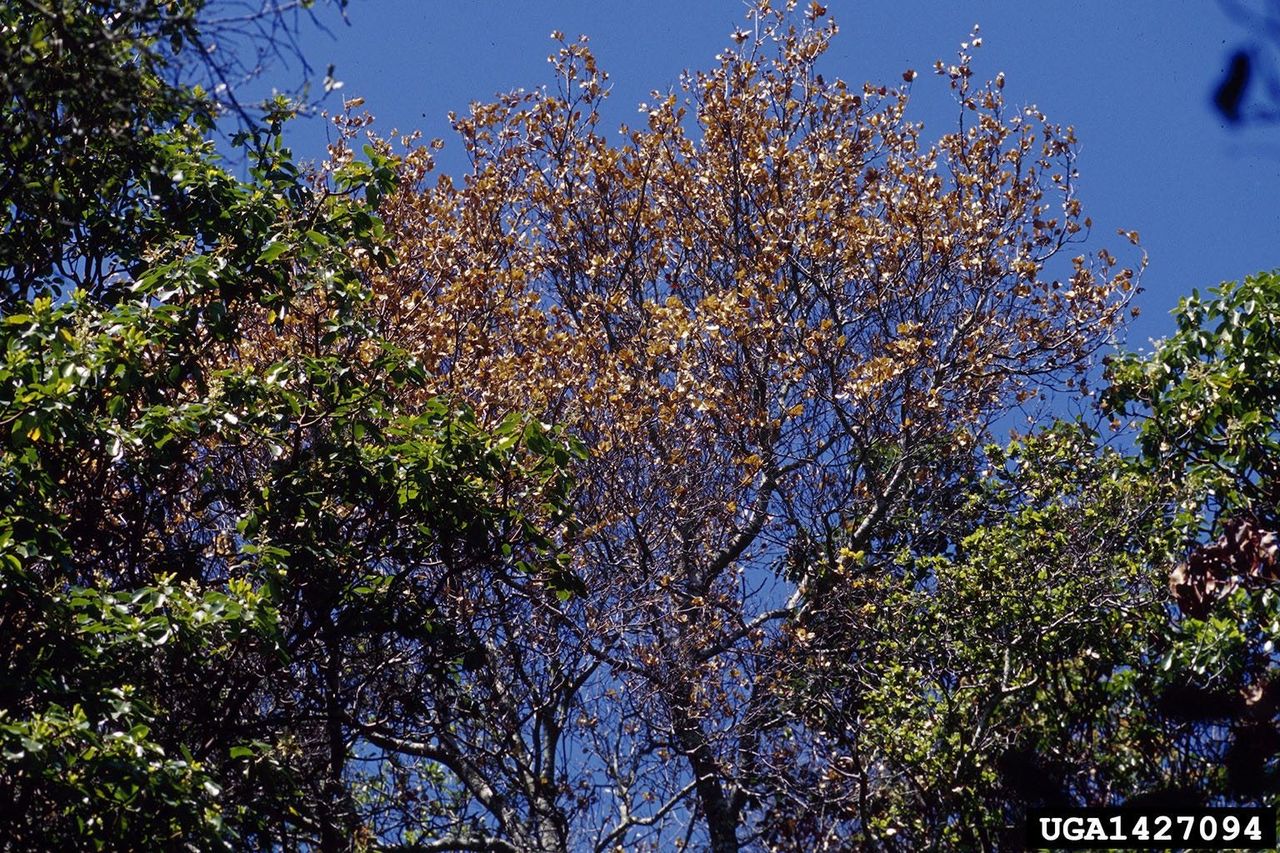What Is Sudden Oak Death: Learn About Symptoms Of Sudden Oak Death


Sudden oak death is a deadly disease of oak trees in coastal areas of California and Oregon. Once infected, trees can’t be saved. Find out how to protect oak trees in this article.
What is Sudden Oak Death?
The fungus that causes sudden oak death (Phytophthora ramorum) results in a quick death for tanoaks, California black oaks, and live oaks along the coast of California and Oregon. The fungus also infects the following landscape plants:
Here are the symptoms of sudden oak death:
- Cankers on the stems and branches.
- Leaves in the crown that turn pale green, then yellow, then brown.
- Cankers that bleed and ooze.
In the alternative species, it causes non-fatal leaf spot or twig dieback instead of the bleeding cankers it causes in oaks. Sudden oak death can infect other species of oak, but those species don’t grow in habitats where the fungus is found, so for now, it isn’t a problem. Since P. ramorum has been identified in nursery stock in California, Oregon, and Washington, there is a possibility of the disease spreading to other parts of the country.
Sudden Oak Death Information
This disease is always fatal in susceptible oak species and there is no cure. Sudden oak death treatment focuses on prevention and protection. Here are a few things you can do to protect your susceptible oaks:
- Allow 15 feet (4.5 m.) between the trunk of an oak tree and other susceptible species, such as bay laurel and rhododendron.
- Spray the fungicide Agri-fos to protect oak trees. This is a preventative spray, not a cure.
- Don’t plant new oak trees in areas with known infection.
Gardening tips, videos, info and more delivered right to your inbox!
Sign up for the Gardening Know How newsletter today and receive a free copy of our e-book "How to Grow Delicious Tomatoes".

Jackie Carroll has written over 500 articles for Gardening Know How on a wide range of topics.
-
 Best Indeterminate Tomatoes: Flavor-Packed Varieties For Fresh Harvests All Summer Long
Best Indeterminate Tomatoes: Flavor-Packed Varieties For Fresh Harvests All Summer LongIndeterminate tomatoes are vining varieties that fruit all season. Discover their distinctive features and how to choose the best type to grow in your garden.
By Bonnie L. Grant
-
 The Dangers Of AI For Gardening – How To Know What’s Real When It Comes To Your Garden
The Dangers Of AI For Gardening – How To Know What’s Real When It Comes To Your GardenThings aren’t always what they seem when it comes to using AI for gardening. Be discerning when relying on AI for accuracy, and take the time to do research.
By Teo Spengler